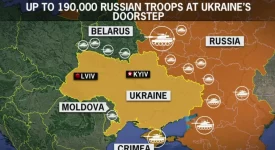The New Instrument for Pre-Accession Assistance (IPA II): Less Accession, More Assistance?
Wolfgang Koeth (European Institute for Public Administration)
The EU’s enlargement can be definitely regarded as one of the best success stories of the EU in the field of foreign policy. Today, the attention is turning more towards the countries of the European Neighborhood Policy. One of the tools for defining EU’s foreign policy strategy was the Instrument for Pre-Accession Assistance (IPA), which replaced the variety of programs (PHARE, PHARE CBC, ISPA, SAPARD and CARDS and the financial instrument for Turkey) and that were created in support of the candidate and potential candidate countries. IPA was in effect in between 2007-2013, while the new IPA II builds on it and is to determine the direction in the years 2014-2020.
The expiration of the IPA showed the need for a new instrument of foreign policy. The IPA II differs from IPA I in few instances: Firstly, unlike the previous tool, the IPA II is not divided into five components but into political areas. Although those thematically overlap with the original components, the countries are given access to all policy areas and not only into selected components as in the previous case. The difference between the candidate and the potential candidate countries are more accentuated, which also plays an important role. The upgrading of a country to the level of a candidate country then has a function of a political reward. The access to finance should be also simplified should thereby reduce the cost of mutual coordination. The main task of the IPA II should also be to provide support for sectoral budgets, which have been popular in the EU since the late 90s. A danger existed that instead of specific projects, the focus of the EU would become rather political.
IPA II is not strictly focused on a specific extension, but rather on the general tools of extensions. After the acceptance of Croatia, the acceptance of another state does not seem realistic before 2020. The initiative to invite a new country to join the EU is, however, entirely up to national states since the European Commission ceded the initiative. National states may define areas with which the EU might be able to help. Their proposals may not be fully in line with the EU law so it usually concerns socio-economic areas of the future Member States. The problem may occur with states where the planning system is not as developed. The approach chosen by the EU’s IPA II should be given some time to be tried out but in the long term it is not sustainable because the states of the Eastern Balkans could lose their interest in joining the EU.
(The study can be downloaded here:
http://publications.eipa.eu/en/details/&tid=1854)
Learning from the Past Experiences: Ways to Improve EU Aid on Reforms in the Eastern Partnership
Elžbieta Kaca, Anita Sobják a Konrad Zasztowt (The Polish Institute of International Affairs)
Financial assistance is an important instrument of foreign policy, and it is therefore not surprising that the countries of the Eastern Partnership (Armenia, Azerbaijan, Belarus, Georgia, Moldova and Ukraine) obtain considerable sums from the European Union in exchange for their promise of a number of reforms. The most common way of how the countries are supported is a direct payment of the financial assistance to the budget of the targeted state. However, the problem usually arises when the legislation is about to be implemented, which shows a number of shortcomings. One of them is often the imperfect or absent civil society, which would oversee this process and criticize the government’s errors.
Therefore, Ukraine, which has been criticized, among other things, for the lack of transparency, received only € 111 million for the period 2007-2013, instead of the originally agreed € 389 million (on energy, sustainable development, removal of trade barriers, transportation, etc.). At the same time, considerable differences in the approach to and understanding of budgetary aid exist between Ukraine and the European Union. In the West, this tool is seen as a way to introduce certain standards of the European Union in the targeted country. The biggest problem is then seen in the fact that Ukraine used this assistance in many cases for replacing their own funding instead of just complementing it. Although Ukraine currently struggles with more serious issues, this may in the long run constitute a big problem for Ukraine.
To improve the financial aid flowing from the EU, it is necessary to make a few changes. Above all, those countries which intend to sign an Association Agreement with the EU should be favored. It is also necessary to better engage ministries that are responsible for the resort in which the reform is about to be carried. All of the reforms should then be publicly discussed with a great number of stakeholders from the beginning so that they garner enough support in all sections of the society.
(The study can be downloaded here: http://www.pism.pl/publications/Learning-from-Past-Experiences-Ways-to-Improve-EU-Aid-on-Reforms-in-the-Eastern-Partnership)
How Much Does EU Citizenship Cost? The Maltese Citizenship-for-Sale Affair: A Breakthrough for Sincere Cooperation in Citizenship of the Union?
Sergion Carrera (Centre for European Policy Studies)
At the end of 2013, Malta received unprecedented attention following its parliament’s approval of a new measure initiated by Joseph Musacata’s government, according to which non-EU citizens may purchase the Maltese citizenship by legally spending €1.15 million on this Mediterranean island. This controversial policy created a wave of criticism in other European states because by purchasing Maltese citizenship the hitherto non-EU person will also gain full EU citizenship and the right to move and settle freely anywhere in the EU. Since the process of obtaining national citizenships remains fully in the hands of national governments, this new policy places the EU in the awkward position of having its doors to citizenship opened without being able to intervene.
According to the Maltese government, the sale of citizenships will aid the country’s economic development. The Prime Minister claimed that the program could bring up to €30 million every year as well as attract foreign investors. However, it did not take long for EU representatives to voice their concerns. The Vice-President of the European Commission Viviane Reding denounced the measure in early January. The European Parliament followed suit in its 16 January declaration. Finally, a compromise was subsequently reached between representatives of the Maltese government and the Commission. Based on this deal, applicants for the Maltese citizenship must also reside in Malta for one year before their application is granted. Moreover, the Maltese government has promised not to issue more than 1800 new citizenships for the time being.
Despite these assurances, the EU continues to feel uneasy about the low requirements of Malta’s citizenship application. The government’s response is that Malta is not the only nation to adopt a similar citizenship program. For example, under a new citizenship program initiated by Cyprus in early 2013, citizenship applications may be accelerated in exchange for investment offers. Similar programs exist in Bulgaria, Austria and Ireland. Although Malta is not the only state to reward investors with permanent residence, in its mid-January declaration the European Parliament only criticized the Maltese program. Other Member States which allow the sale of national citizenships are only indirectly encouraged to make their citizenship application programs compatible with the values of the European Union.
(The study can be downloaded here: http://www.ceps.be/book/how-much-does-eu-citizenship-cost-maltese-citizenship-sale-affair-breakthrough-sincere-cooperat)







